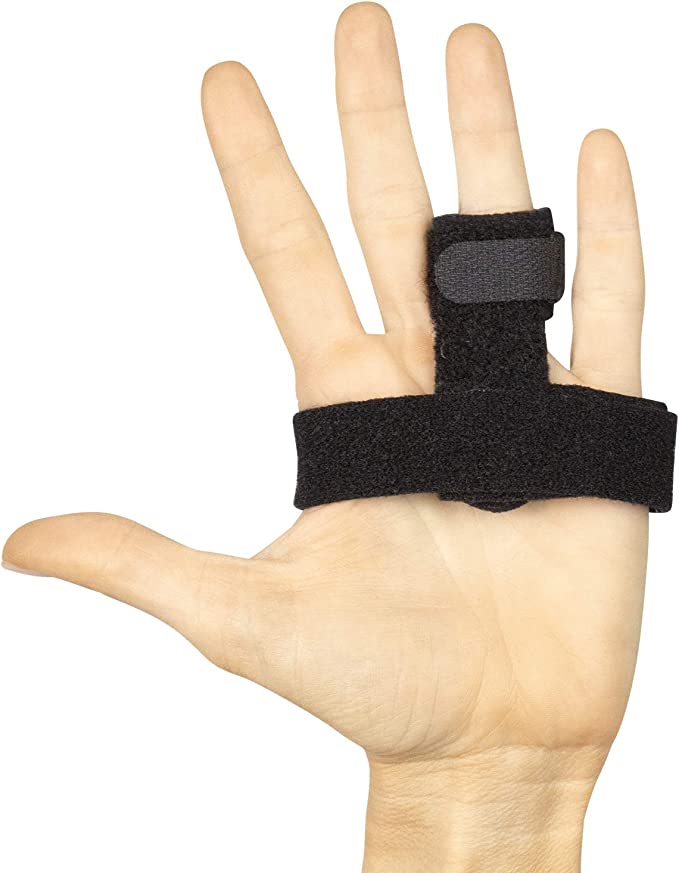Some may think the term “trigger finger” is an old wives’ tale, but those living with this uncomfortable condition can tell you it isn’t a fallacy, it’s a reality. Trigger fingers are often something you hear about or see acted out in the movies and can’t quite grasp until it happens to you. Trigger finger, also known as stenosing tenosynovitis (stuh-NO-sing ten-o-sin-o-VIE-tis), is a condition in which one of your fingers gets stuck in a bent position when opened or closed. Your finger may straighten with a snap like a trigger being pulled and released. Think this doesn’t sound too bad? Think again!
Trigger fingers can be very irritating to you physically and emotionally. Research shows that episodes can occur when inflammation narrows the space within the casing that surrounds the tendon in the affected finger. If the trigger finger is severe, your finger may become locked in a bent position. Depending on your lifestyle, hobbies and general requirements for wellbeing, you may be at a higher risk of developing a trigger finger and/or feeling as though your life is put on pause by one.
Trigger fingers are no fun, plain and simple! Symptoms of trigger finger could occur when any of the four fingers of the hand attempts to flex closed while gripping. Instead of a nice smooth, continuous closure, the finger hesitates and then snaps closed. When attempting to straighten the finger, a similar hesitation may occur before it “snaps” into full extension. In some cases, the finger must then be manually brought into full extension or flexion. The closure is frequently associated with pain and can also affect the thumb. Other symptoms include popping, locking, and clicking, along with pain and nodules.
Hands and fingers have many different intricate parts. Each finger has tendons that attach the muscles to the bone. Each tendon is surrounded by a protective covering. A trigger finger happens when the affected finger’s tendon covering becomes irritated and inflamed. This interferes with the normal gliding motion of the tendon through the cover. If the finger continues to be irritated it can then cause scarring, thickening, and nodules, and worsen the tendon’s movement even more, resulting in a trigger finger. Typically, trigger finger occurs as an isolated condition because of repetitive trauma or use. The Mayo Clinic reports that they are found more in women and sometimes, are an associated condition resulting from an underlying illness, like rheumatoid arthritis or diabetes.
What do you do if you have one? Just ignore it? Live with it? No way! A trigger finger diagnosis also comes with many treatment options to give you relief and bring back your quality of life. Always bring up any chronic issue or concern to your health care provider. Treatment can include rest, ice, and over-the-counter pain meds, all the way to cortisone shots and surgery. Before surgery, your doctor may recommend a percutaneous release. This procedure is sometimes done in the doctor’s office or outpatient procedure room. All surgeries come with risks, but trigger finger surgery may also come with instant relief! A surgeon would work through a small incision near the base of your affected finger, they would cut open the constricted section of tendon covering. This procedure is usually done in an operating room, sometimes with or without anesthesia.
We need our hands! From texting to driving, to your favorite crafts or sports, all the way to holding the hand of the person you love, we need our hands. If you are experiencing any new or lasting sensations of paralysis, it’s time to reach out for help. Don’t let these issues wear you down when you could be on the road to recovery before you know it. Talk to your health care provider about different treatment options that might work for you or rule out any other condition. Go ahead, pull the trigger on your trigger finger and get help today. We all deserve and need happy healthy hands!
Mary Hoadley
Director of The Wellness Center


